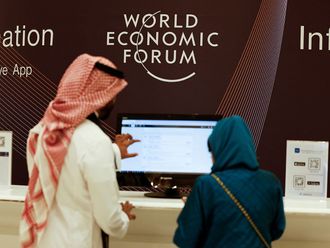Abu Dhabi: Organisation of the Petroleum Exporting Countries (Opec) in its monthly said that US shale oil production will start to decrease in the coming months due to significant reduction in the number of shale drilling rigs while predicting the demand for its crude to increase.
The oil producing group of twelve countries expects non-Opec oil supply to grow by 680,000 barrels per day this year, down from its previous estimate of 850,000 barrels per day, because US tight oil and Canadian oil sands output are expected to see lower growth.
The demand for its own crude would rise slightly to around 29.3 million barrels per day, the report said.
Oil prices have dropped by nearly 60 per cent since June last year due to record US shale production and decreasing demand from China and other markets.
Opec, which pumps a third of the world’s oil refused to cut oil production to prop up oil prices at its meeting in Vienna last year.
From a peak of $115 per barrel in June, oil prices plunged to less than $50 in January before recovering later on due to slight increase in demand and concern over Yemen crisis and possible disruptions to vital shipping lanes along Ban Al Mandeb strait.
Meanwhile, an energy brokerage firm predicted oil prices to move upwards from now on after prices rose by more than three per cent to around $63 per barrel on Thursday, the highest for the year.
Brent, the international benchmark for crude oil was trading at $62.27 at around 3:45pm UAE time and West Texas Intermediate at $55.36.
“We turn extremely bullish on oil after Wednesday’s 5 per cent rally in crude prices. The stars align, crude oil prices should start to move upwards now,” said Singapore based Phillip Futures in a note to clients.
A number of factors contributed for the surge in oil prices including faltering US shale production, lower than expected oil stockpiles and the ongoing conflict in Yemen, analysts said.
“This increase was initially due to only a small increase in US crude inventories. Compared to past weeks of over 10 million barrels, this week’s inventories only increased by 1 million barrels,” said Daniel Ang, an analyst with Phillip Futures.
He said geopolitical events could easily cause more spikes or even dampen this uptrend.
“Geopolitical events, like the Iranian oil not entering the market and heightened Yemen conflict did play a part in the past weeks to bring oil prices to where it is now.”
Richard Mallinson, an energy expert working for London based Energy Aspects said the prices could fall back into 50s before recovering later on.
“The market is oversupplied and it will take time to rebalance. Our average price forecast for Brent is $63 this year,” said Mallinson speaking to Gulf News over phone.
He said the market is adopting a wait and see to approach on Iran and the issue unlikely to impact prices at the moment.
“No immediate return of Iranian oil into the market and there are differences between the US and Iran that need to be solved.”












